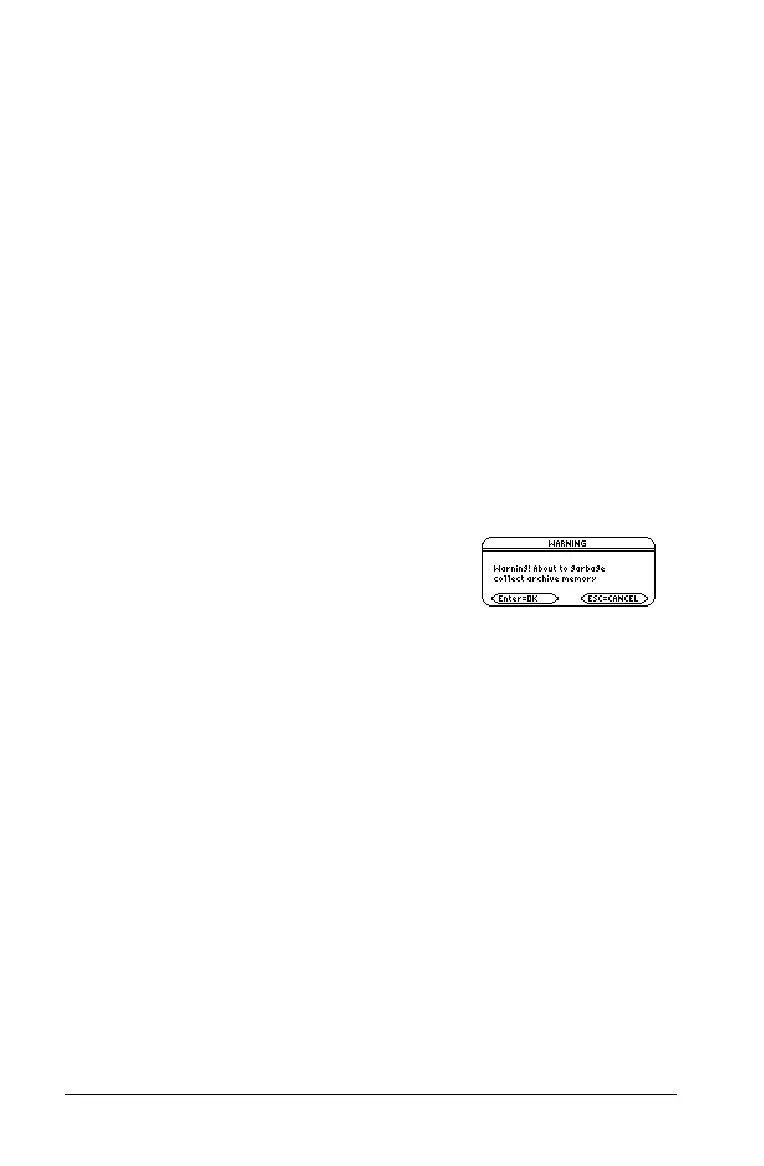144 Memory and Variable Management
You can access an archived variable just as you would any locked variable.
For all purposes, an archived variable is still in its original folder; it is
simply stored in the user data archive instead of RAM.
Note: An archived variable is locked automatically. You can access the
variable, but you cannot edit or delete it.
From the Home Screen or a Program
Use the Archive and Unarchiv commands:
Archive variable1, variable2, …
Unarchiv variable1, variable2, …
If a Garbage Collection Message Is Displayed
If you use the user data archive extensively, you may see a Garbage
Collection message. This occurs if you try to archive a variable when there
is not enough free archive memory. However, the TI-89 Titanium will
attempt to rearrange the archived variables to make additional room.
Responding to the Garbage Collection Message
After garbage collection, depending on how much additional space is
freed, the variable may or may not be archived. If not, you can unarchive
some variables and try again.
Why not Perform Garbage Collection Automatically,
without a Message?
The message:
• Lets you know why an archive will take longer than usual. It also
alerts you that the archive may fail if there is not enough memory.
• Can alert you when a program is caught in a loop that repetitively
fills the user data archive. Cancel the archive and investigate the
reason.
When you see the message to the right:
• To continue archiving, press ¸.
– or –
• To cancel, press N.

